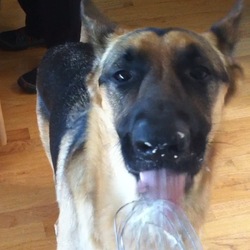J.M. Labruyere
Prologue Propriétaire de Vignes Grand Cru Champagne Blend
 Champagne, France
Champagne, France

Assemblage: 70% Pinot Noir, 30% Chardonnay
Terroir: Verzenay Grand Cru
Bottling Date: April 2, 2014
Disgorgement Date: January 29, 2019
Dosage: 1.6 G/L
Assemblage: 70% Pinot Noir, 30% Chardonnay
Terroir: Verzenay Grand Cru
Bottling Date: April 2, 2014
Disgorgement Date: January 29, 2019
Dosage: 1.6 G/L

2012 Vintage; July 2013 bottling; April 2017 disgorgement.
2012 Vintage; July 2013 bottling; April 2017 disgorgement.
Feb 1st, 2020
2 April 2014 bottling(2013 vintage)
28 January 2019 disgorgement
2 April 2014 bottling(2013 vintage)
28 January 2019 disgorgement

2 April 2014 bottling(2013 vintage)
28 January 2019 disgorgement
2 April 2014 bottling(2013 vintage)
28 January 2019 disgorgement

The 17th century saw an explosion of beverage options in Europe. Spirits were coming into their own, flavoring with hops was finally the standard for beer, and chocolate, coffee, and tea began flowing from overseas. Wine was no longer the only kid on the block, and had to offer something new to stay on top.
Sparkles in wine due to second fermentations were nothing new, but it was the leap in English glassmaking technology in the 1620s with coal-firing that allowed them to be harnessed. No longer would there be constant risk of bottles exploding from pressure, and bubbles came ever more into vogue - much to the chagrin of the great advocates of still blanc de noirs Champagne, Dom Perignon and the Marquis de Saint-Evremond. But there was no holding back the tide, and by the end of the century sparkling Champagne was the drink of choice for high courts across Europe.
(This is adapted from notes for Le Dû’s Wines ‘History of Wine 1453AD-Present’ seminar, where this wine was poured.)
The 17th century saw an explosion of beverage options in Europe. Spirits were coming into their own, flavoring with hops was finally the standard for beer, and chocolate, coffee, and tea began flowing from overseas. Wine was no longer the only kid on the block, and had to offer something new to stay on top.
Sparkles in wine due to second fermentations were nothing new, but it was the leap in English glassmaking technology in the 1620s with coal-firing that allowed them to be harnessed. No longer would there be constant risk of bottles exploding from pressure, and bubbles came ever more into vogue - much to the chagrin of the great advocates of still blanc de noirs Champagne, Dom Perignon and the Marquis de Saint-Evremond. But there was no holding back the tide, and by the end of the century sparkling Champagne was the drink of choice for high courts across Europe.
(This is adapted from notes for Le Dû’s Wines ‘History of Wine 1453AD-Present’ seminar, where this wine was poured.)

70% Pinot Noir, 30% Chardonnay. Flavors are lemon curd, pineapple and French toast. Very short (up front only) and fat on the finish. Disgorged June 27, 2016 dosage 4.8 g. SS
70% Pinot Noir, 30% Chardonnay. Flavors are lemon curd, pineapple and French toast. Very short (up front only) and fat on the finish. Disgorged June 27, 2016 dosage 4.8 g. SS
Nov 18th, 2017
Citrus tones lead the way. A fine bead. Hints of other tropical fruit behind. Toast and nice cut.
Citrus tones lead the way. A fine bead. Hints of other tropical fruit behind. Toast and nice cut.
1 person found it helpfulJan 7th, 2018
75% Pinot noir, 25% Chardonnay
Verzenay Grand Cru
Triage: 1 September 2015
Dégorgement: 17 February 2021
Dosage: 1,6 g/L
75% Pinot noir, 25% Chardonnay
Verzenay Grand Cru
Triage: 1 September 2015
Dégorgement: 17 February 2021
Dosage: 1,6 g/L




